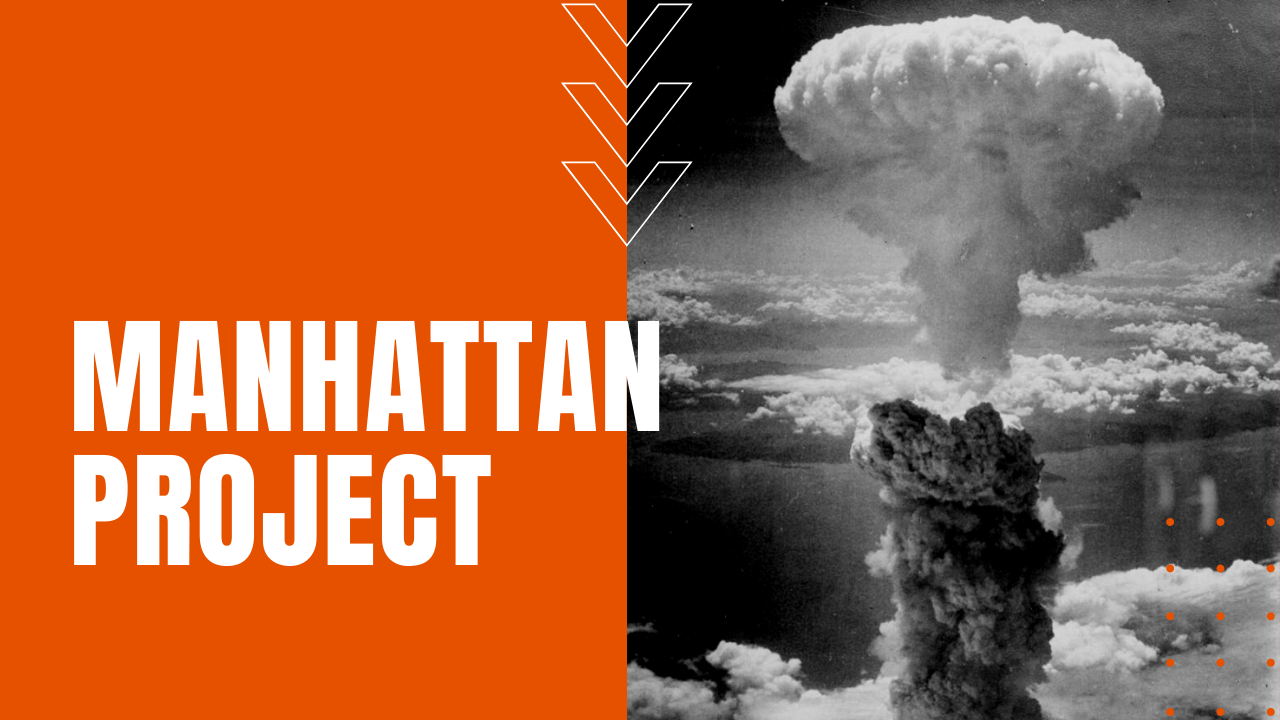The Manhattan Project

Cloaked in deep secrecy during World War Two, Major General Leslie Groves of the U.S. Army Corps of Engineers and nuclear physicist Robert Oppenheimer, the director of the Los Alamos Laboratory in New Mexico, began the project modestly in 1939 but quickly grew to employ more than 130,000 people at its peak operation.
What Was the Manhattan Project?
The Manhattan Project was a joint research and development project between the United States, Canada and Great Britain with the goal of developing the world’s first nuclear bomb.
90 percent of the project’s cost—nearly $24 billion in today’s currency—was spent on building factories for the production of fissile material, while less than 10 percent went to the actual development and production of nuclear bombs.
The Atomic Bomb
Research took place at more than 30 sites across the U.S., England and Canada, yet despite its massive scope and reach, the Manhattan Project remained top secret throughout its seven-year lifespan.
Two types of atomic bombs were developed concurrently, including the relatively simple gun-type fission bomb and the more complex implosion-type bomb. The first, a gun-type bomb known as Thin Man, proved impractical for use with plutonium, so the project moved on to a second gun-type bomb known as Little Boy, despite the complexities of enriching its uranium 235 isotope.
Nearly all of the program’s uranium enrichment occurred at the Clinton Engineering Works at Oak Ridge Tennessee, which included electromagnetic, gaseous and thermal enrichment techniques.
A concurrent plutonium enrichment process was carried out at the Metallurgical Laboratory at the University of Chicago, which designed the X-10 Graphite Reactor at Oak Ridge, with additional reactors at the Hanford enrichment site in Washington State.
These efforts would result in the first plutonium implosion-type bomb codenamed Fat Man, which was further refined and developed at Los Alamos. The first nuclear device ever detonated was an implosion-type bomb codenamed Trinity, which was detonated on July 16th, 1945 at New Mexico’s Alamogordo Bombing and Gunnery Range.
Hiroshima and Nagasaki
A month later, Little Boy and Fat Man bombs were dropped on Hiroshima and Nagasaki respectively, which would ultimately result in Japan’s unconditional surrender on August 15th, 1945, just four days before a third nuclear bomb was scheduled for detonation over a third major Japanese city.
The Manhattan Project would formally end in 1946, after its final nuclear detonation test at Bikini Atoll, known as Operation Crossroads. In January 1947, the Manhattan Project would be replaced by the creation of the U.S. Atomic Energy Commission.
